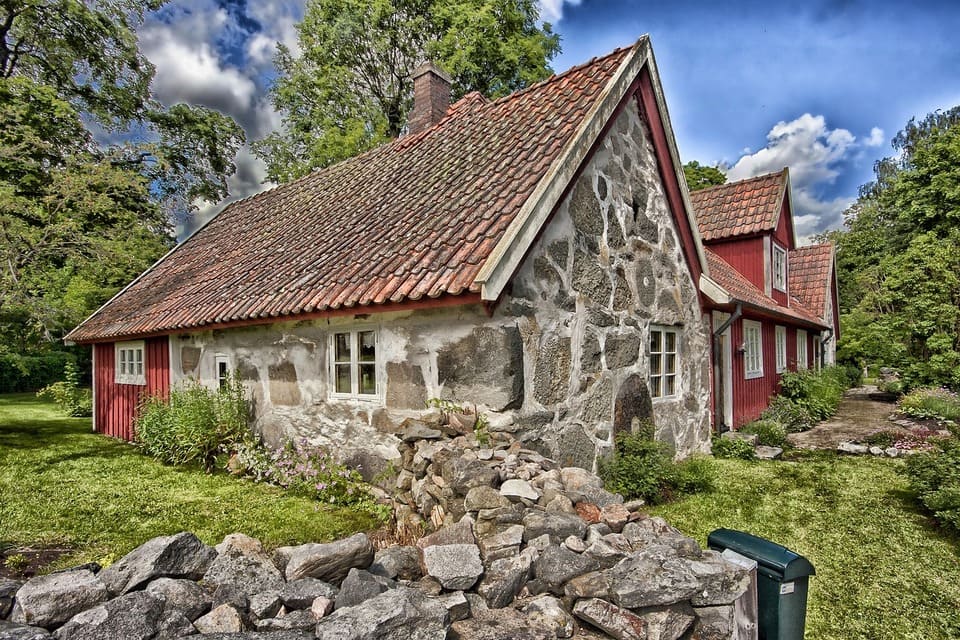
Talking Sweden: Decoding Languages and Population Share
Sweden, the picturesque Scandinavian nation known for its stunning landscapes, progressive social policies, and rich cultural heritage, is also a place of linguistic diversity. While Swedish is the most widely spoken language in the country, Sweden's history of immigration and its commitment to diversity has led to a mosaic of languages spoken across its territory. In this exploration of the spoken languages of Sweden, we will delve into the primary languages, their distribution, and the percentage of the population that speaks them.
Swedish - The Most Spoken Language in Sweden
Swedish, often referred to as "Svenska," is not just the most spoken language in Sweden; it is the official language and the one that binds the nation together. As a North Germanic language, Swedish shares linguistic roots with Norwegian and Danish but has evolved into a distinct language with its unique characteristics.
The vast majority of Sweden's population, approximately 98%, speaks Swedish as their first language. It is the primary language used in education, media, government, and daily life. Swedish is known for its melodious and rhythmic quality, characterized by distinct intonation patterns and a relatively straightforward grammar structure.
Finnish and Meänkieli - Minority Languages in Sweden
While Swedish dominates Sweden's linguistic landscape, there are minority languages spoken by specific communities. One of these is Finnish, spoken primarily in the northernmost regions of Sweden, near the border with Finland. The Finnish-speaking minority is concentrated in towns and villages where they maintain their linguistic and cultural traditions.
Meänkieli, also known as Tornedalian, is another minority language spoken in the Torne Valley, located in the northernmost part of Sweden. Meänkieli is closely related to Finnish and has distinct regional variations. This language serves as an important marker of cultural identity for the Tornedalian population.
Together, Finnish and Meänkieli are spoken by a small percentage of Sweden's population, approximately 3%. While they may not be widely used in official contexts, efforts are made to preserve and promote these languages, especially in education and cultural initiatives.
Sami Languages - Indigenous Languages of Northern Sweden
The Sami people, the indigenous inhabitants of Northern Europe's Arctic region, have their group of languages known as the Sami languages. These languages are part of the Finno-Ugric language family, which includes Finnish and Estonian. In Sweden, there are several Sami languages, including Northern Sami, Lule Sami, and Southern Sami.
The distribution of Sami languages varies across different regions of Northern Sweden. Northern Sami, the most widely spoken Sami language, is concentrated in the northernmost parts of the country, including areas in Lapland. Lule Sami is spoken in parts of Norrbotten County, while Southern Sami is found in the southernmost areas of Sweden's Sami regions.
While the Sami languages have a relatively small number of speakers compared to Swedish, they are a vital part of Sweden's cultural heritage and are actively preserved through educational programs, cultural events, and language revitalization initiatives.
Immigrant Languages - Diverse and Multifaceted
Sweden's commitment to multiculturalism and its history of immigration has led to the presence of numerous immigrant languages spoken throughout the country. These languages represent the cultural diversity of Sweden's immigrant population and add vibrancy to the linguistic landscape.
Some of the most commonly spoken immigrant languages in Sweden include Arabic, Kurdish, Somali, Persian, and Spanish. These languages are spoken by immigrant communities that have made Sweden their home. Arabic, for example, is often spoken by individuals with origins in the Middle East and North Africa, while Kurdish is spoken by those from Kurdish-speaking regions in the Middle East.
The distribution of immigrant languages varies across different regions of Sweden, with larger populations of speakers in major urban areas. Stockholm, Gothenburg, and Malmö, as Sweden's largest cities and primary immigration hubs, have diverse linguistic communities, contributing to the rich tapestry of languages spoken in these cities.
Percentage of Population Speaking Immigrant Languages
The percentage of the population speaking immigrant languages in Sweden has steadily increased in recent decades, reflecting the nation's changing demographics. As of the most recent data available, approximately 19% of Sweden's population speaks a language other than Swedish at home.
It's important to note that the percentage of the population speaking immigrant languages can vary significantly from one region to another. In larger cities and urban areas, where immigrant populations are more concentrated, the percentage of speakers of immigrant languages tends to be higher. In contrast, in rural and less densely populated regions, the percentage is generally lower.
Significance of Multilingualism
Sweden's embrace of multilingualism is a testament to its open and inclusive society. The presence of multiple languages is seen as an asset rather than a challenge, enriching the cultural fabric of the country. Multilingualism is supported by various government initiatives, educational programs, and community organizations aimed at preserving and promoting these languages.
Additionally, the Swedish education system places a strong emphasis on language learning. Swedish children are typically taught English from an early age, and many also have the opportunity to learn a third language in school, such as German, French, Spanish, or another language of their choice. This commitment to language education fosters a culturally aware and globally connected society.
Sweden's Linguistic Mosaic
In conclusion, Sweden's linguistic landscape is a reflection of its history, culture, and commitment to diversity. While Swedish remains the most spoken language in Sweden, minority languages like Finnish, Meänkieli, and the Sami languages enrich the tapestry of Sweden's linguistic heritage. Immigrant languages contribute to the nation's multicultural identity, with communities from around the world making their linguistic mark.
The percentage of the population speaking immigrant languages demonstrates the evolving demographics of Sweden, with urban areas exhibiting greater linguistic diversity. Sweden's approach to multilingualism is a shining example of its openness, inclusivity, and dedication to preserving linguistic traditions while embracing new ones. This dynamic linguistic mosaic is a reflection of Sweden's vibrant and ever-evolving society.
Professional Translation for Sweden's languages
When it comes to professional translation for Sweden's diverse range of languages, the best approach is to turn to a trusted and experienced translation company. One such language service provider that excels in offering comprehensive translation services for all Sweden languages globally is PoliLingua. Regardless of where you are located, PoliLingua can be your go-to solution for all your translation needs.
Their global accessibility, comprehensive range of services, transparent pricing, and commitment to quality make them a trusted partner for individuals, businesses, and organizations seeking accurate and reliable translation solutions.
Whether you are looking to translate legal documents, localize a website, or need assistance with technical or medical translations, PoliLingua's team of experts is ready to assist you. Simply reach out to them by filling out their request form for a free quotation or contact them by phone or email at your convenience. With PoliLingua, you can be confident that your translation needs will be met with professionalism, accuracy, and a commitment to excellence.







